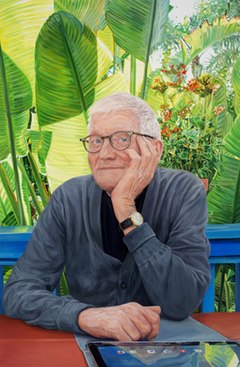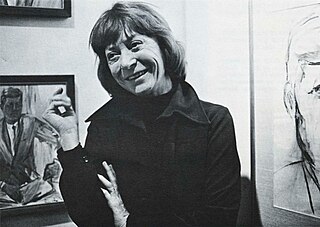
Elaine Marie Catherine de Kooning was an Abstract Expressionist and Figurative Expressionist painter in the post-World War II era. She wrote extensively on the art of the period and was an editorial associate for Art News magazine.
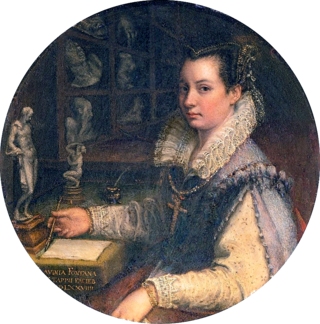
Lavinia Fontana was an Italian Mannerist painter active in Bologna and Rome. She is best known for her successful portraiture, but also worked in the genres of mythology and religious painting. She was trained by her father, Prospero Fontana. She is regarded as the first female career artist in Western Europe, as she relied on commissions for her income. Her family relied on her career as a painter, and her husband served as her agent and raised their 11 children. She was perhaps the first female artist to paint female nudes, but this is a topic of controversy among art historians.
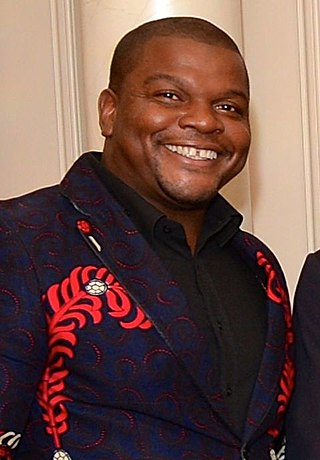
Kehinde Wiley is an American portrait painter based in New York City. He is known for his naturalistic paintings of Black people that reference the work of Old Master paintings. In 2017, Wiley was commissioned to paint former President Barack Obama's portrait for the Smithsonian National Portrait Gallery. The Columbus Museum of Art hosted an exhibition of his work in 2007 and describes his paintings as "heroic portraits which address the image and status of young African-American men in contemporary culture."

Eva Hesse was a German-born American sculptor known for her pioneering work in materials such as latex, fiberglass, and plastics. She is one of the artists who ushered in the postminimal art movement in the 1960s.
Archie Rand is an American artist from Brooklyn, New York, United States.
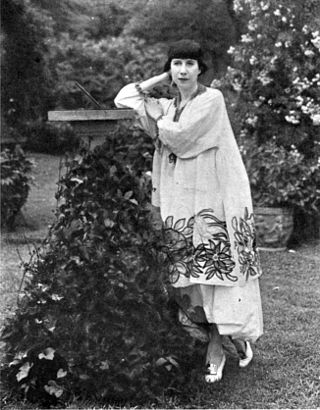
Florine Stettheimer was an American modernist painter, feminist, theatrical designer, poet, and salonnière.
Lynette Yiadom-Boakye is a British painter and writer, of Ghanaian heritage. She is best known for her portraits of imaginary subjects, or ones derived from found objects, which are painted in muted colours. Her work has contributed to the renaissance in painting the Black figure. Her paintings often are presented in solo exhibitions.
Susanna J. Coffey is an American artist and educator. She is the F. H. Sellers Professor in Painting at the School of the Art Institute of Chicago and lives and works in New York City. She was elected a member the National Academy of Design in 1999.

Cora Cohen was an American artist whose works include paintings, drawings, photographs, and altered x-rays. Cohen is most known for her abstract paintings and is often identified as continuing the tradition of American Abstraction. In a 2023 review in Artforum Barry Schwabsky suggested that "Cohen’s determination to evade stylistic consistency has made her one of the most underrated painters in New York." The New York Times' critic Michael Brenson wrote of her 1984 exhibition, Portraits of Women: "The works are dense, brooding and yet elated. The turbulence of the paint not only looks but also feels like freedom." Cohen interviewed many other artists also associated with continuing the tradition of American Abstraction for Bomb Magazine including; Ralph Humphrey, Dona Nelson, Craig Fisher, Carl Ostendarp, and Joan Mitchell. Her work has also been identified with traditions of European abstraction, and specifically German abstraction, including the work of Wols, Sigmar Polke, Gerhard Richter. She began exhibiting in Germany in the early nineties and continued to show at some of its most prestigious institutions.
Eileen Hogan is a figurative painter, who lives and works in London. She has shown in museums and private galleries in the UK and America. Her retrospective exhibition at the Yale Center for British Art in New Haven, USA in 2019, accompanied by a book published by Yale University Press, focused particularly on two dominant themes – enclosed gardens and portraiture. She is a professor emeritus at the University of the Arts London, a trustee of the Royal Drawing School, and an ambassador for the Salveson Mindroom Centre, a Scottish charity.
Russ Warren is an American figurative painter who has exhibited extensively throughout the U.S. and abroad, notably in the 1981 Whitney Biennial and the 1984 Venice Biennale. A painter in the neo-expressionist style, he has drawn inspiration from Spanish masters such as Velázquez, Goya and Picasso, as well as from Mexican folk art and the American southwest. Committed to his own Regionalist style during his formative years in Texas and New Mexico, he was picked up by Phyllis Kind in 1981. During those years he transitioned to a style characterized by "magical realism", and his work came to rely on symbol allegory, and unusual shifts in scale. Throughout his career, his paintings and prints have featured flat figures, jagged shadows, and semi-autobiographical content. His oil paintings layer paint, often incorporate collage, and usually contain either figures or horses juxtaposed in strange tableaux.

Ellen Harvey is an American-British conceptual artist known for her painting-based practice and site-specific works in installation, video, engraved mirrors, mosaic and glass. She frequently pairs traditional representational vocabularies and genres with seemingly antithetical postmodern strategies, such as institutional critique, appropriation, mapping and pastiche. Her work examines such themes as art as a mirror, interactions between built environment and landscape, ruins and the Picturesque aesthetic, and cultural and economic relationships between museums, artists and publics. Curator Henriette Huldisch writes of her work, "haunted as it is by the notion of art's ultimate futility, her paradoxical stake is in persistently testing art's possibility to do something in the world after all."
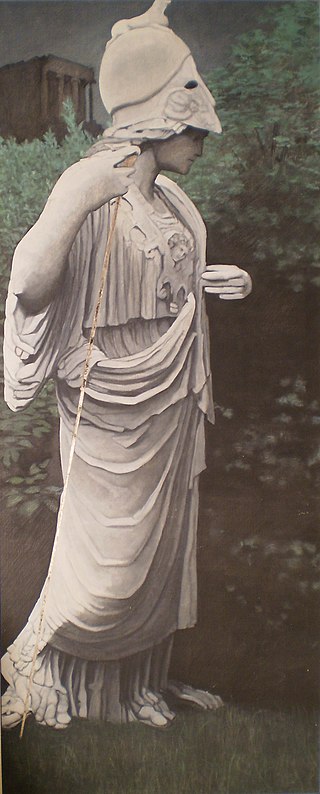
Marcia Marcus is an American figurative painter of portraits, self-portraits, still life, and landscape.
Hope Gangloff is an American painter based in New York City who is known for her vividly-colored portraiture.

Stephanie Rose, was an American painter known for dramatic non-narrative abstract paintings composed of diverse passages including representational imagery and for portraiture in which the highly recognizable subjects appear in settings related to her work in abstraction; both, she has said, involve a "combination of historical and existential perspectives".
Brenda Goodman is an artist and painter currently living and working in Pine Hill, New York. Her artistic practice includes paintings, works on paper, and sculptures.
Amy Sherald is an American painter. She works mostly as a portraitist depicting African Americans in everyday settings. Her style is simplified realism, involving staged photographs of her subjects. Since 2012, her work has used grisaille to portray skin tones, a choice she describes as intended to challenge conventions about skin color and race.

Laurie Hogin is an American artist, known for allegorical paintings of mutant animals and plants that rework the tropes and exacting styles of Neoclassical art in order to critique, parody or call attention to contemporary and historical mythologies, systems of power, and human experience and variety. She has exhibited nationally and internationally, including at the Museum of Contemporary Art Chicago, International Print Center New York, and Contemporary Arts Center Cincinnati. Her work belongs to the art collections of the New York Public Library, MacArthur Foundation, Addison Gallery of American Art, and Illinois State Museum, among others. Critic Donald Kuspit described her work as both painted with "a deceptive, crafty beauty" and "sardonically aggressive" in its use of animal stand-ins to critique humanity; Ann Wiens characterized her "roiling compositions of barely controlled flora and fauna" as "shrewdly employing art historical concepts of beauty for their subversive potential." Hogin is Professor and Chair of the Studio Art Program at the University of Illinois at Urbana–Champaign.
Clarity Haynes is a queer feminist American artist and writer. She currently lives and works in New York, NY. Haynes is best known for her unconventional painted portraits of torsos, focusing on queer, trans, cis female and nonbinary bodies. She is a former member of the tART Collective and the Corpus VI Collective.

Joanna Pousette-Dart is an American abstract artist, based in New York City. She is best known for her distinctive shaped-canvas paintings, which typically consist of two or three stacked, curved-edge planes whose arrangements—from slightly precarious to nested—convey a sense of momentary balance with the potential to rock, tilt or slip. She overlays the planes with meandering, variable arabesque lines that delineate interior shapes and contours, often echoing the curves of the supports. Her work draws on diverse inspirations, including the landscapes of the American Southwest, Islamic, Mozarabic and Catalan art, Chinese landscape painting and calligraphy, and Mayan art, as well as early and mid-20th-century modernism. Critic John Yau writes that her shaped canvasses explore "the meeting place between abstraction and landscape, quietly expanding on the work of predecessors", through a combination of personal geometry and linear structure that creates "a sense of constant and latent movement."
